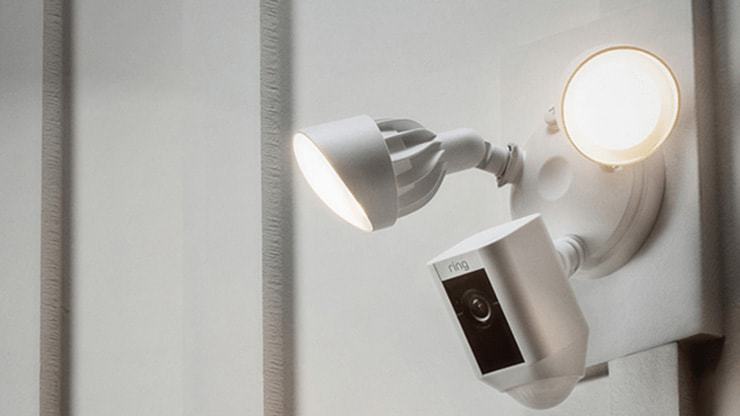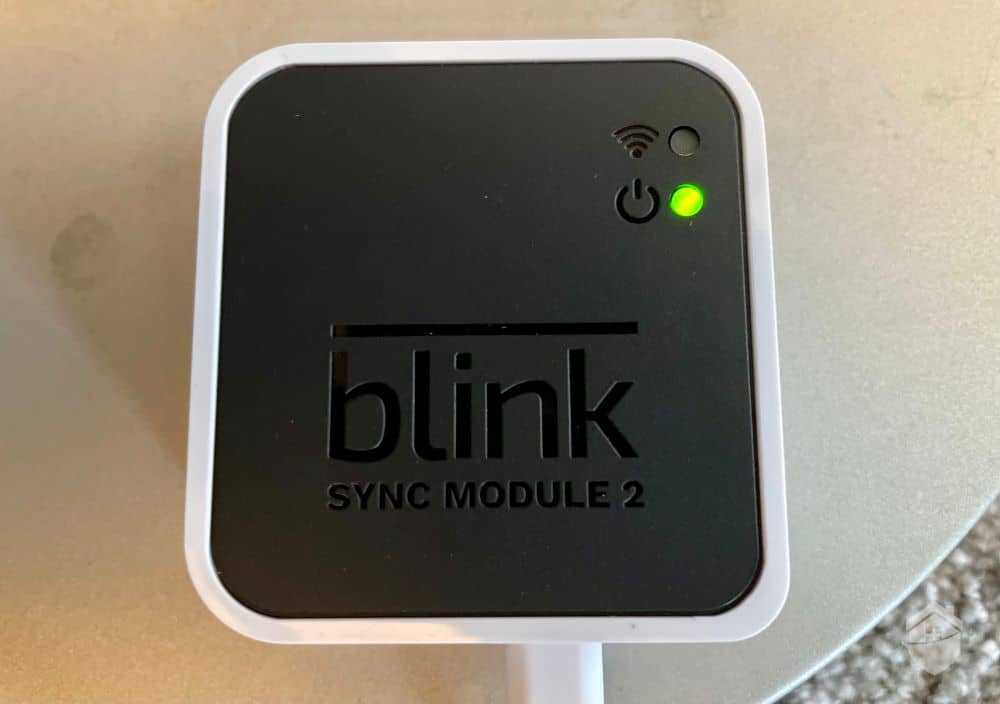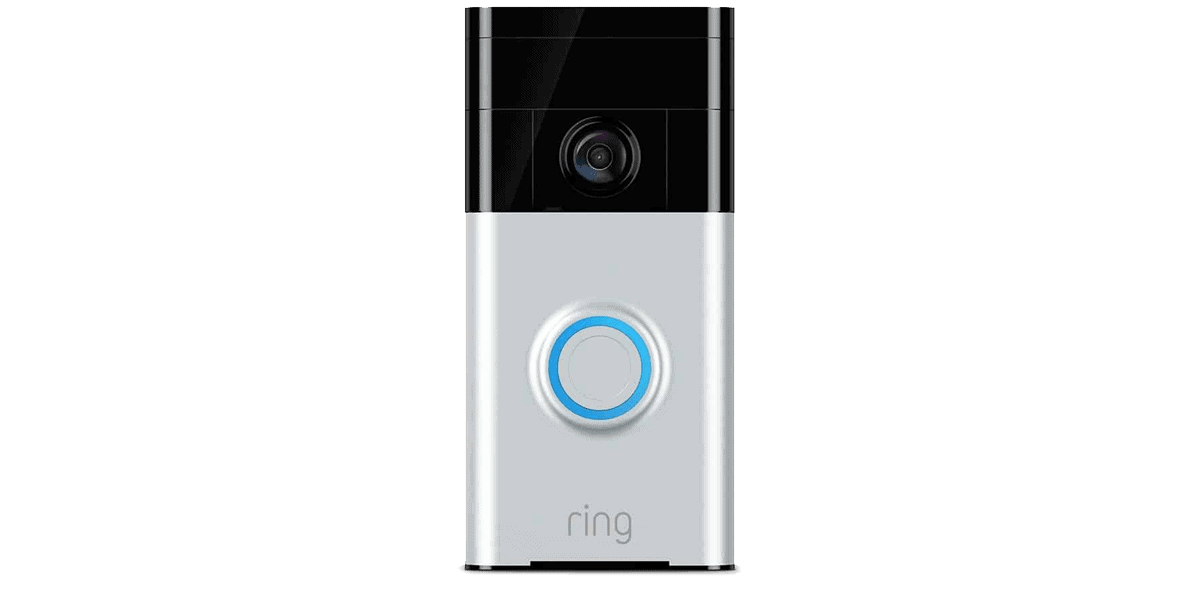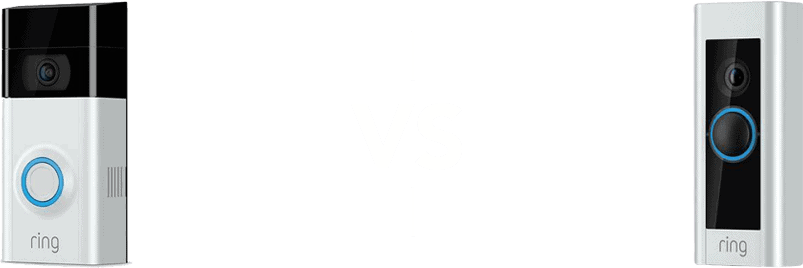Thieves prefer to lurk in the shadows where they can’t be seen. That’s why security cameras with lights are great for home security, and Ring, one of the best security camera providers, offers two of them – the Ring Spotlight Cam and the Ring Floodlight Cam. Which do you choose?
A light is a light is a light, right? Nope. Ring’s Spotlight Cam and Floodlight Cam both shed light on your home security needs, but they perform very different functions. That means you can’t just close your eyes and pick between them. You have to understand exactly what they do so you can choose the one that best fits your particular home security needs. Luckily, you have us to sort it all out for you. Below, we get into exactly what these two cameras do and don’t do, so you can make the most informed decision possible.
FYI: You actually don’t have to choose between the two, because the Floodlight Cam and Spotlight Cam work well with each other. But if you want to maximize the usefulness of your security cameras, keep reading to find out where we recommend placing each.
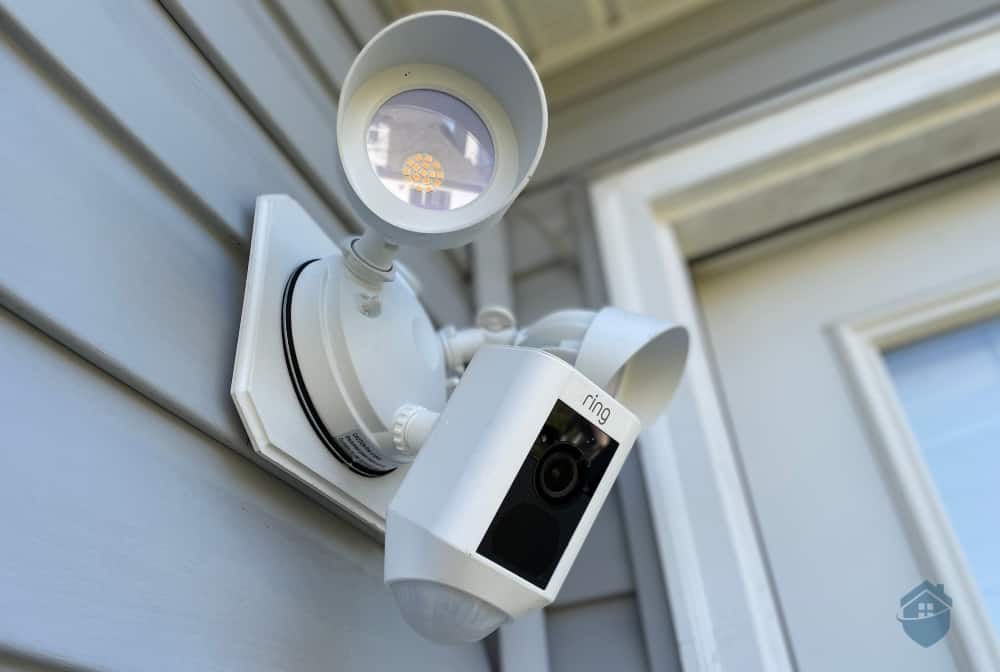
The Ring Floodlight Cam
Ring Outdoor Cameras Overview
So before we go any further, let’s take a moment to talk about what each of these cameras is designed to do. We’ll get into all their finer points a little later, but what is the key difference between them?
- Ring Spotlight Cam: If you’re trying to find your way from the car to your front door, what you really need is soft, focused lighting. This is exactly the kind of lighting the Spotlight Cam provides. Can this cam startle a burglar? Maybe. Any sign that you’re home and keeping an eye on your property is going to help. Ultimately, though, the Spotlight Cam’s function is to help you find your way around your home’s exterior.
- Ring Floodlight Cam: As the name implies, this camera floods an area with bright light. Normally, that’s not the sort of thing you want to experience yourself. It’s perfect, though, if you’re looking to raise a burglar’s blood pressure.
The question, then, is whether you want blinding lights that will stop burglars in their tracks and possibly scare them away, or a spotlight that can help you see your way into the house or welcome guests to your home.
Beyond this basic question, there are a host of other factors to consider. Are you looking for a hardwired model, or is wireless your thing? How are you planning to power your device? Battery? Outlet? Ring now offers solar panels. And how many of these devices does your property need?
That’s a lot of questions, but keep reading. You’ll find we have a lot of answers.
Ring Floodlight vs Ring Spotlight: Similarities
For all their differences, these cameras do have a few similarities. That’s pretty natural given that both are manufactured by the same company.
First, both the Ring Floodlight and the Ring Spotlight provide the same monitoring options. You can self-monitor either of them for free. If you sign up for the free plan – or, more accurately, don’t sign up – you still get real-time alerts and access to live footage. You can add Ring cloud subscription and store footage – again, with either camera – for $4.99 a month per camera or $9.99 per month for unlimited cameras. Or you can pay $19.99 to gain additional features such as Smart Video Search and 24/7 continuous recording. No matter which plan you choose, you get 180 days of cloud video storage for event clips.
Monitoring isn’t the only similarity between these two cameras. Both also make use of the Ring app, and that’s significant. That app is the source of real-time alerts and access to live and recorded footage. In addition, the app let us turn our cameras on and off, and we used its two-way talk capabilities to communicate with whoever’s on the camera’s end – including to deter potential intruders.
Finally, both of these cameras are available in different models. Ring is committed to offering cameras that operate in a variety of different ways. As a starting point, you get to choose between “Plus” and “Pro” models. Plus means you get customizable motion zones powered by PIR motion sensors. Pro models include a more advanced type of motion detection, called 3D motion detection, which is powered by radar. We decided to get the Plus models.
After that, we chose from different power options. Now, the Spotlight Cam and Floodlight Cam don’t offer the same power options. The Spotlight Cam has plugged-in, battery-powered, and solar-powered models. The Floodlight Cam comes in plugged-in and hardwired models. But the point is, both cameras are versatile.
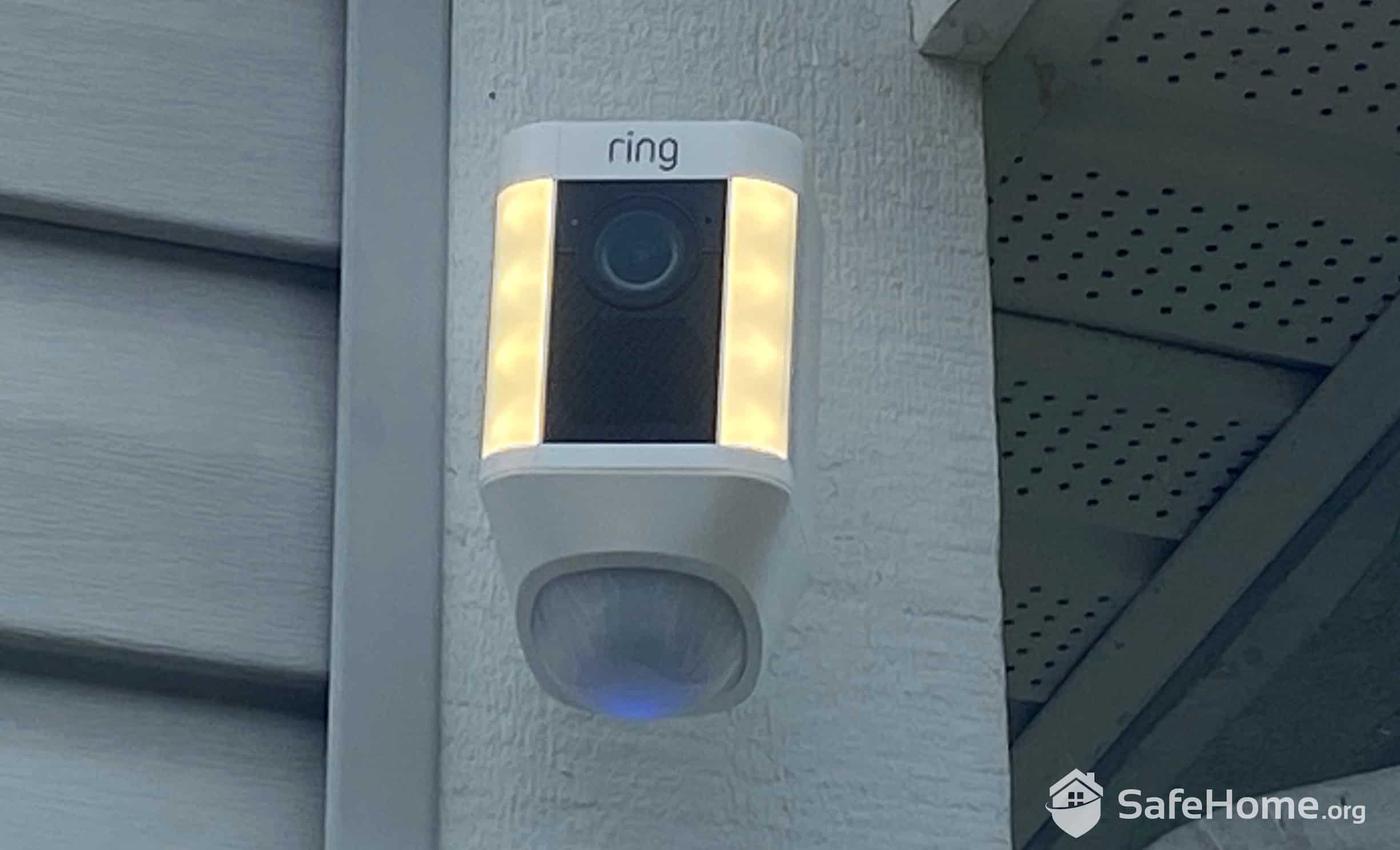
Ring Spotlight Cam at Twilight
Ring Spotlight vs Ring Floodlight: Differences
These two cameras have some very specific technical differences that affect their various features. We’ll get into those. Let’s start simple, though. The Floodlight Cam is designed to stop criminals. The Spotlight Cam, in contrast, is designed to help homeowners see at night.
Pro Tip: Regardless of which product you choose, you can’t go wrong with adding additional lighting to your property. Security lights are one of the best ways to fend off burglars, after all.
Very few burglars have the presence of mind to keep going when they’re hit by 2,000 lumens. There’s just no place to hide, and trust us, burglars are pretty unhappy when there’s no place to hide. Add to that a 105 dB siren, which is about as loud as a jet landing at Harry Reid International Airport, and you create a great one-two punch. Of course, this isn’t the sort of camera you want to come on when you arrive home in the evening. Unless, of course, you like being struck blind after a hard day of work.
The Spotlight Cam, on the other hand, offers a welcoming light, whether you need help getting the groceries in after sundown or you want to welcome guests to your home for a soiree. The Spotlight could be used to ward off intruders – in a pinch. After all, if you’re not expecting a light to come on, you’re going to be startled. This camera’s real purpose though is to help homeowners navigate at night.
Features
Both of these cameras come packed with features, whether you go with a battery-powered or wired model. As we suggested above, some of those features overlap. These cameras serve very different purposes, though, and they need very different features in order to fulfill those purposes.
To keep it simple, we’ve broken down each model and added some extra information on the differences between the Plus and Pro models to make it easier to choose the right one for your needs.
Spotlight Cam Plus
- Color Night Vision
- Customizable Motion Detection
- Two-Way Talk
- Motion Activated Notifications
- Built In Siren
Spotlight Cam Pro
- 3D Motion Detection
- Enhanced Audio
- Dual-Band WiFi
- Two-Way Talk
- Built-In Siren
Floodlight Cam Plus
- Color Night Vision
- 2000 Lumen Floodlight
- 105 dB Siren
- Motion Activated Notifications
- Two-Way Talk
Floodlight Cam Pro
- Color Night Vision
- 3D Motion Detection
- Dual-Band WiFi
- Enhanced Audio
- 105 dB Siren
Finally, don’t forget that these two cameras also come with different power options. We might point out, though, that the Spotlight Cam has a bit more flexibility. All floodlight cameras require some sort of wiring to power their strong lights. That means you either have to hardwire the camera directly into a junction box or you have to find an outdoor outlet to plug it into. In some cases, this means hiring an electrician to help out. The Spotlight Cam can be hardwired as well, but it’s also available in a battery-powered version. In fact, you can even connect these cameras to one of Ring’s solar power panels for maximum convenience.
Pricing
As you’d expect, the pricing on these devices differs based on which model you select and which power source you want to use. Here’s a quick breakdown of what that looks like:
| Camera | Battery | Plug In | Solar |
|---|---|---|---|
| Spotlight Cam Plus | $169.99 | $169.99 | $199.99 |
| Spotlight Cam Pro | $229.99 | $229.99 | $249.99 |
| Floodlight Cam Plus | N/A | $199.99 | N/A |
| Floodlight Cam Pro | N/A | $249.99 | N/A |
You should know that Ring has developed a reputation for running frequent sales. Over the holidays, for instance, almost all of Ring’s lighted cameras were available at deep discounts. The Spotlight Cam Plus, was a full $60 off the regular price, just $109.99. The Floodlight Cam Plus was $80 cheaper than usual, at $119.99. Prices are back to normal at the moment, but if you bookmark our guide to Ring’s sales and discounts, we’ll let you know as soon as there’s a change.
What We Think
It’s tough to go wrong with Ring, no matter what kind of camera you’re looking for. They offer some of the best security cameras on the market today, and at quite affordable prices. The company’s Spotlight and Floodlight cameras are especially powerful, though. If you’re looking for outdoor coverage, you get both a reliable, hearty camera and the bonus of lighting in emergency situations.
You do want to think through your specific needs, though. The Floodlight Cam works great for straightforward security. You can be sure its bright lights and high-dB siren will frighten off even the bravest would-be burglars. Not everyone needs that kind of protection, though. Or maybe you need a different sort of camera to complement the Floodlight, a camera that can help illuminate a path for you when you come home late at night. In that case, the Spotlight Cam is definitely the better choice. As always with home security, it always comes down to finding the best equipment to suit your situation.




